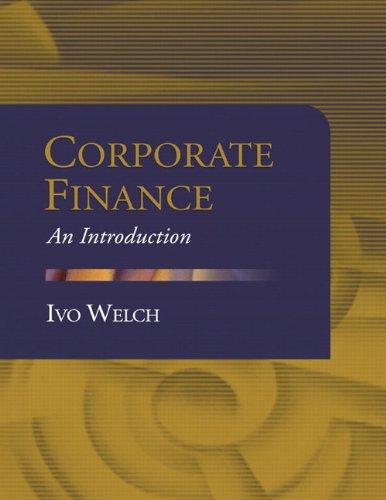A multibillion-dollar corporation is undertaking an R&D project. It costs $1 million in R&D. Because it is
Question:
A multibillion-dollar corporation is undertaking an R&D project. It costs $1 million in R&D.
Because it is risky, the appropriate cost of capital for R&D is 15%. Next year, if it succeeds
(probability of 80%), the firm can build a factory for $10 million that can be financed with an $8 million mortgage, and it will earn $20 million the following year. It has no risk, so the cost of capital is only 6%.
(a) Assume taxes in the economy do not exist.
What is the value of this firm?
(b) Assume there are taxes now. The firm is in the 33% tax bracket. The after-tax opportunity costs of capital are therefore 10%
and 4%, respectively. The cash outflows of $1 million and $10 million are not tax deductible when they are incurred, but capital losses are fully tax deductible at the same corporate income rate. (Hint:
What is the income that Uncle Sam works with in either case? What kind of effective tax credits does this mean from the perspective of the firm?) If the firm is fully equity-financed, what is the value of this project in the presence of taxes?
(c) Using APV, what is the value of this project if the factory is fully financed with risk-free debt?
Step by Step Answer:







